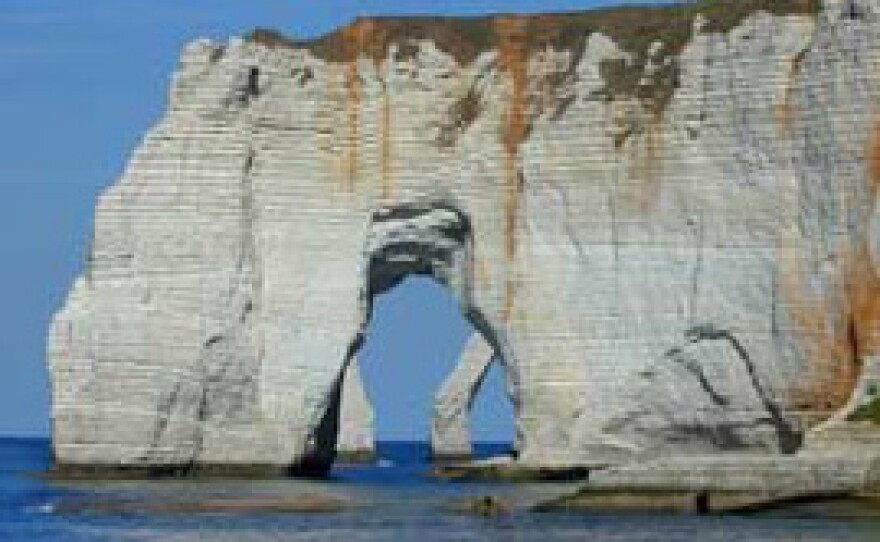(Photo: Sea cliff at Tilleul Beach on the coast of Normandy, France are rich in microfossils and of the same age as the marine chalks used in the study to understand Earth's climate history. Scripps Institution of Oceanography )
Global warming doesn't mean all the planet's glaciers will melt. New research from UC-San Diego shows that warming in the past has helped ice growth. KPBS Environmental Reporter Ed Joyce has more on this paradox, and how it may lead to answers about our future climate.
Scripps Institution of Oceanography Professor Richard Norris says his research breaks new ground. While common belief is that large ice sheets could not have existed on Earth during past hot climate periods, the evidence Norris found turns that upside down.
Norris: What we found is that you could actually build ice sheets when it's really warm. And so, that global climate change has this kind of perverse effect of as you warm up the planet you put more moisture into the atmosphere and we think that that contributes to higher snowfall rates, you know, at high latitudes.
He says that was a bit of a surprise since researchers thought if you have really warm conditions the ice would melt everywhere.
Norris co-authored the study along with a former Scripps researcher now working in Germany. They started by drilling down for core samples in the deep ocean floor off South America.
Norris: And there we found a sedimentary record that had these little microfossils in it. And we took the microfossils out of the sediment and we analyzed them geochemically and we discovered, ah, using our geochemistry, that the ocean had been really warm about 90 million years ago.

|
|
(Photo: A micrograph of two types of foraminifera, M. sinuosa and W. baltica, used to study climate conditions during the Cretaceous Thermal Maximum, 91 million years ago.
Scripps Institution of Oceanography) |
He says the marine microfossils are each about the size of one grain of table salt. Norris puts a slide under the microscope to give us a look.
Ed Joyce: So when you look at these what does this tell you, how do you interpret what this information tells you from these tiny, tiny ah, grains of sand and shells and fossils, microfossils?
Norris: There are species that like warm water, there are species that like cold water. So you can look at the composition of the assemblage of species and tell whether the water was warm or cold. And make a pretty good estimate of what the surface ocean temperatures were like in the past based upon the composition of the fossils.
He says the microfossils come from a time when ocean temperatures were in the mid-90s, with the land climate a bit like Houston on a hot summer day. But if it's so hot, how do you grow ice?
Norris: When it's that warm you have all this moisture in the atmosphere and if you have high mountains in some place which could get cold, like the, like Antarctica, then you could start to grow ice sheets by having snow that lasts all-year round, it doesn't melt in the summer time.
He says the research provides evidence that the planet had a glacial ice cap about 90 million years ago.
The new information may send climate change researchers back to the drawing board since computer models of global warming did not factor in growing ice during that time.
Norris: Global climate models have a hard time dealing with growing big ice sheets during a time when it's really super warm. And so that suggests that we need to go back to our climate models and try to investigate this further.
That means the research projecting melting ice and sea level rise by the end of this century and beyond may need some revision to account for the possibility that ice can grow in a warming climate.
Norris says the research is a critical element to predict what will happen as the planet continues to warm from natural and human-caused activity that speeds up the heating of Earth.
Ed Joyce, KPBS News.






